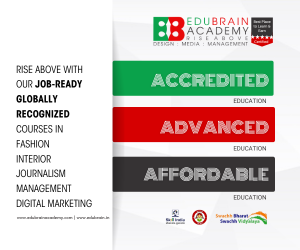The UGC released the Guidelines for Institutional Development Plans (IDP) for Higher Education Institutions (HEIs) to assist HEIs in becoming self-sufficient and contributing to the greater good via cutting-edge research.
The guidelines suggest that HEIs are required to conduct a SWOC Analysis: Assess the Strengths, Weaknesses, Opportunities, and Challenges (SWOC) of the institutions to determine opportunities and choices that need to be leveraged and areas that need improvement.
For effective research and development, institutions need to establish a clear strategy towards securing external funding, provisioning essential research infrastructure, recruiting and mentoring top-tier research faculty, and fostering collaborations and partnerships. Additionally, they should uphold research integrity through established ethical practices, and wherever possible monetise research through startup support and intellectual property management.
The guidelines suggest an increased intake of students in the research-based curriculum; undertaking quality research projects; establishing a portfolio approach to research projects and quality research facilities and research labs, enabling the development of disruptive and affordable technologies.
The UGC guidelines state that the university must admit more research scholars within its capacity of support. The institution should exercise its autonomy to appoint more research professors, who may eventually retire from active employment, only to supervise research scholars. Universities should create post-doctoral research programmes as well to maintain the PhD graduates’ contributions to ongoing research.
The university ought to adopt a strategy to boost the proportion of PhD holders among its faculty. The guidelines say that HEIs should also explore research monetisation through Technology Transfer Office (TTO) with experienced professionals to manage IP protection, licensing, and technology transfer activities. Conduct training programmes to educate researchers and staff about research monetisation and IP protection. Explore ‘Earn while Learn’ facility & flexibility as it gives working skills for a student with responsibility, and it also supports the financial needs of a student so that he need not depend on his parents for his pocket money.
To improve financial enablers, the UGC guidelines suggest identifying and prioritising the existing and additional sources of funding for the development of financial enablers such as government grants, project overheads, research consultancies, patents, alumni donations, private sector partnerships, and fundraising campaigns. The public-funded as well as other HEIs must strive to work on a sustainable revenue model where the revenues are derived from the following main sources such as:
i. Tuition fee from the students
ii. Government grants and subsidies
iii. Overheads earned on the sponsored research and development projects
from the Government and private/ corporate sector
iv. Endowments, philanthropic contributions and other income like CSR,
royalties on intellectual property (IP)/ patents etc.
c) In a fully developed HEI, each of these sources need to contribute a balanced percentage to the total revenue, depending on the strategy & size of the HEIs.
Therefore, HEIs must also focus on expanding their revenue sources in a “fit for strategy” model.
The HEIs, according to the UGC guidelines, are required to implement and operationalise National Credit Framework (NCrF), Academic Bank of Credits (ABC), Natioonal Higher Education Qualification Framework (NHEQF) with level descriptors and integrate Vocational Education, Training & Skilling into HEIs. They should create world-class Open Online/Digital/Blended learning Resources for a Global student/audience (OCW, MOOCs). Promote commercial business ideas while mentoring the student and becoming part of their startup ecosystem.
In order to meet the needs of students at different levels, universities can create and execute UG/PG programs. In addition, extra certificate programs in other fields might be provided. Universities can also provide certificate courses through memorandums of understanding with industry, reputable international organizations, and so on. To facilitate startup operations, the HEIs must offer a robust digital backbone that grants access to digital networks and resources.
Stay Update with FELA News!
Source: Education Times





